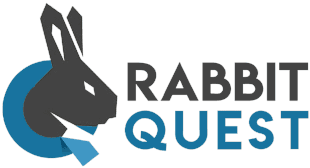How do you ensure flexible timing within your next vitality initiative? 🤸
As an HR manager, you no doubt recognise the challenge: you have a fantastic vitality initiative ready to go, but participation lags behind. The biggest barrier? Time. Employees often feel they are too busy to participate in activities, however valuable they are. So how do you make sure your vitality initiative is flexible enough so that everyone can participate at a time that suits them? Flexibility in timing is key to lowering barriers and increasing participation. We share interesting insights with you that will ensure your next vitality initiative includes plenty of flexibility.
Time to read: 5 minutes
‘No time’ should no longer be an excuse! Here's how to make participation apples-to-apples 🍏
It is likely that you have a set schedule for meetings, trainings or activities within your organisation. While structure is nice, it can also be a pitfall. Employees have different schedules and responsibilities, both at work and at home. This means that a midday lunch walk may be perfect for one person, but impossible for another.
What if you considered offering your vitality initiative's activities at multiple times? For example, by organising the same workshop in the morning as well as in the afternoon, you give employees the freedom to choose when it is most convenient for them. An HR manager of a medium-sized company saw immediate results: a yoga session that initially had only five participants grew into an activity with twenty enthusiastic employees. This way, you significantly lower the threshold for participation, without dramatically changing the initiative itself.
Another possibility is to offer on-demand options. Think videos or online modules that employees can follow in their own time. For example, an employee who likes to start early can participate in a mindfulness session before his working day, while another might do it in the evening, after putting the children to bed. With this flexibility, you make the vitality initiative truly accessible to everyone.
Mini-moves: how small actions make big impact (even in a busy working day) 🚶♀️
As an HR manager, you know better than anyone that your employees' working day is not always predictable. Sometimes last-minute projects pop up or there are unexpected meetings. This can mean that employees have to adjust their schedules and vitality activities easily take a back seat. But what if the activities were designed to take hardly any time and be easy to fit in, no matter how busy?
Imagine offering a series of ‘mini-activities’. These can be short exercises of five to 10 minutes, such as a breathing exercise or a simple stretching session, that employees can do in their breaks or even between meetings. An HR manager in a dynamic company where employees were constantly on the move introduced this idea with great success. Instead of one long event at the end of the week, she gave her team the opportunity to incorporate small vitality moments daily. And the result? Employees felt fitter and felt they could do something for their health even during a busy working day.
Besides short activities, you can also offer ‘flexible catch-up moments’. Should someone miss a weekly sports class or session due to busyness, they can catch up on the activity later at a time that suits them. This prevents employees from dropping out when they are unable to attend.
Let employees choose their own vitality adventure 🗺️
Every HR manager understands that employees do not want uniformity. Not everyone is enthusiastic about the same activities, and it is precisely this variety that can be the key to success. If your vitality initiative offers different types of activities, you give employees room to choose what suits them. Offering variety in both time and content ensures that everyone can find something that suits their interests and schedule.
Instead of one fixed vitality programme, you can put together a menu of activities. Think for example of weekly walks, but also digital workshops that employees can follow from home. An HR manager at a technology company found that offering both physical and virtual options gave a huge boost to participation. It found that some employees preferred to participate in an online meditation session from home, while others enjoyed the physical contact during a joint sports activity.
Offering different times for the same activity is also a smart way to promote autonomy. For example, you could organise a sports class at 8:00 am on Mondays for the early birds, and at 6:00 pm on Wednesday evenings for those who prefer to exercise after working hours. This way, everyone feels free to choose a time that works best for them, without feeling like they are missing out on anything.
Flexibility as the new norm 📝
The success of your vitality initiative hinges on the flexibility you offer. By offering activities at different times, organising shorter sessions and allowing employees to choose how and when they participate, you lower barriers and increase engagement. With a flexible initiative, you give your employees space to prioritise their health, regardless of their busy workday. And that ensures that everyone participates with pleasure and enthusiasm, in a way that suits their own rhythm.




